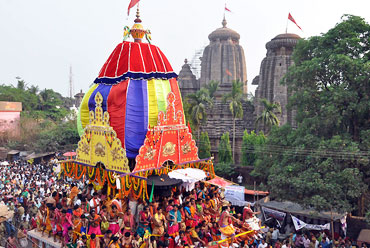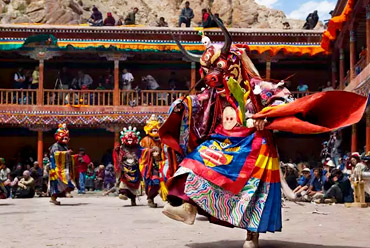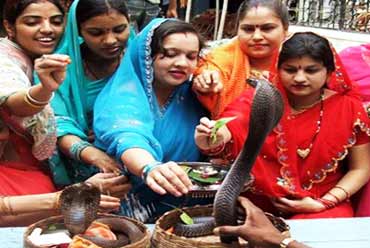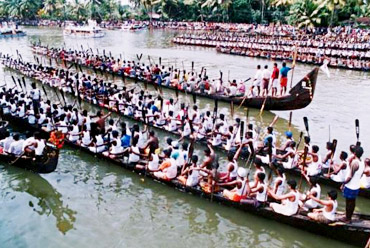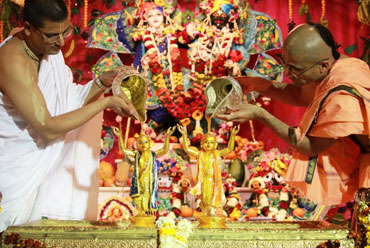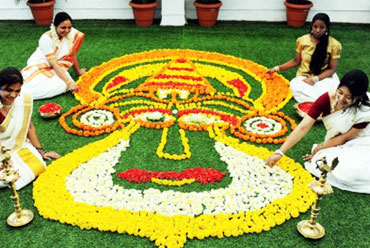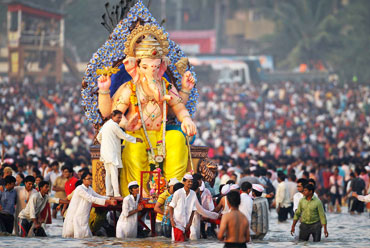The festival Lohri signifies the harvesting of the Rabi crops. The people of Northern India, especially Punjab and Haryana celebrate Lohri, to mark the end of winter. Harvested fields and front yards are lit up with flames of bonfires, around which people gather to meet friends and relatives and sing folk songs. Children go from house to house singing and collecting money and sweets, which they throw into the bonfires.
For Punjabis, this is more than just a festival; it is also an example of their love for celebrations. Lohri celebrates fertility and the joy of life. People gather around bonfires, throw sweets, puffed rice and popcorn into the flames, sing popular and folksongs and exchange greetings.
Time Of The Year
The festival generally falls in the month of January. This is the time when the coldest month of the Indian calendar, Paush, ends and the month of Magh begins. This day is also known as Makar Sankranti.
Celebrations
The day begins with children collecting Lohri, which is in the form of money or sweets. In the evening, winter savories are served around a bonfire. Celebrated enthusiastically, this festival marks the end of the chilling winter of the northern part of India.
Children go from door to door singing songs in praise of Dulha Bhatti, a Punjabi version of Robin Hood who robbed the rich to help the poor. These 'visitors' are given money and gazak, bhuga, til, moongphali, gur, and rewri. Munchies, collected from each house, go around the party and are also thrown into the fire.
The festival assumes greater significance if there has been a happy event in the family during the year gone by, like the birth of a male child or a marriage. The family then plays host to relatives and friends wherein the eats take a back seat and merry-making takes over. The celebration with the traditional bhangra dance along with the dhol, gidda and light-hearted flirtation mark this festival.
Rituals
An extremely auspicious day, Lohri marks the sun's entry in to the 'Makar Rashi' (northern hemisphere). Geographically speaking, the earth leans towards the sun along the Tropic of Capricorn (Makar rekha) from the day following Lohri, also known as the Winter Solstice. The earth, farthest from the sun at this point of time, starts its journey towards the sun along its elliptical orbit, thus heralding the onset of spring.
The period, from January 14 to July 14, is known as the Uttarayan. It is also the last day of the month of Maargazhi, the ninth month of the lunar calendar. The Bhagawad Gita deems it an extremely sacred and auspicious time, when Lord Krishna manifests himself most tangibly.
The focus of Lohri is on the bonfire. The traditional dinner with makki-ki-roti and sarson-ka-saag is essential. The prasad comprises of five main things: til, gazak, gur, moongphali, and phuliya or popcorn. The puja involves a parikrama around the fire and distribution of prasad. This symbolizes a prayer to Agni, the fire god, for blessing the land with abundant crops and prosperity. This is also the one day when the womenfolk and children get a lot of attention. The first Lohri of a new bride or a newborn baby is considered extremely important.
Legends
There is a popular belief in Punjab that blessings are bestowed on the family of the person who asks for a radish roasted in the bonfire of a family that has reason to celebrate.
Being a harvest festival celebrated to relax and enjoy the post harvest time, the festivities of this time are legendary. The tradition of bonfires, community get-togethers and the demanding of Lohri by the children are some of the practices that have been followed since ages and are an integral part of the festival.
Regional Celebrations
Across India, people celebrate the month and the bountiful harvest it brings -Pongal in Tamil Nadu, Bhugali Bihu in Assam, Bhogi in Andhra Pradesh and Sankranti in Karnataka, Bihar and Uttar Pradesh. It is this occasion, which is celebrated as Lohri in northern India, Makar Sankranti in the central part of the country and as Pongal-Sankranti in South India. The festival is spread over three days in South India and signifies the beginning of harvesting. A Rath Yatra is taken out from the Kandaswamy temple in Chennai on Pongal. The day is celebrated as Ganga-Sagar mela in West Bengal and according to popular belief; Hindus can purify their sins by taking bath in the Ganges on this day. A big fair is also held on the Sagara Island, 64 km from the Diamond Harbor where the Ganga meets the Bay of Bengal. Call it Lohri, Pongal or Sankranti, the festival conveys the same message -- the bond of brotherhood and the spirit of oneness should prevail above everything else.
Lohri is celebrated in the northern part of India, especially in Punjab and Haryana with great festivities and delight. In the northeastern region of India, especially in Assam, this festival is celebrated as Bhugali Bihu. This is also the harvest festival when the farmers relax after the completion of their harvesting work. Here the bonfire and the community dinner are some of the aspects that resemble the festivities of Lohri.
Places To Visit
Generally the festival is celebrated all over India though it is known by different names. The festivities too are almost similar to each other showing the general characteristic behavior of the Indian farmers. But the beauty of the Lohri bonfire and the Bhangra that goes along with it can only be witnessed in Punjab.


